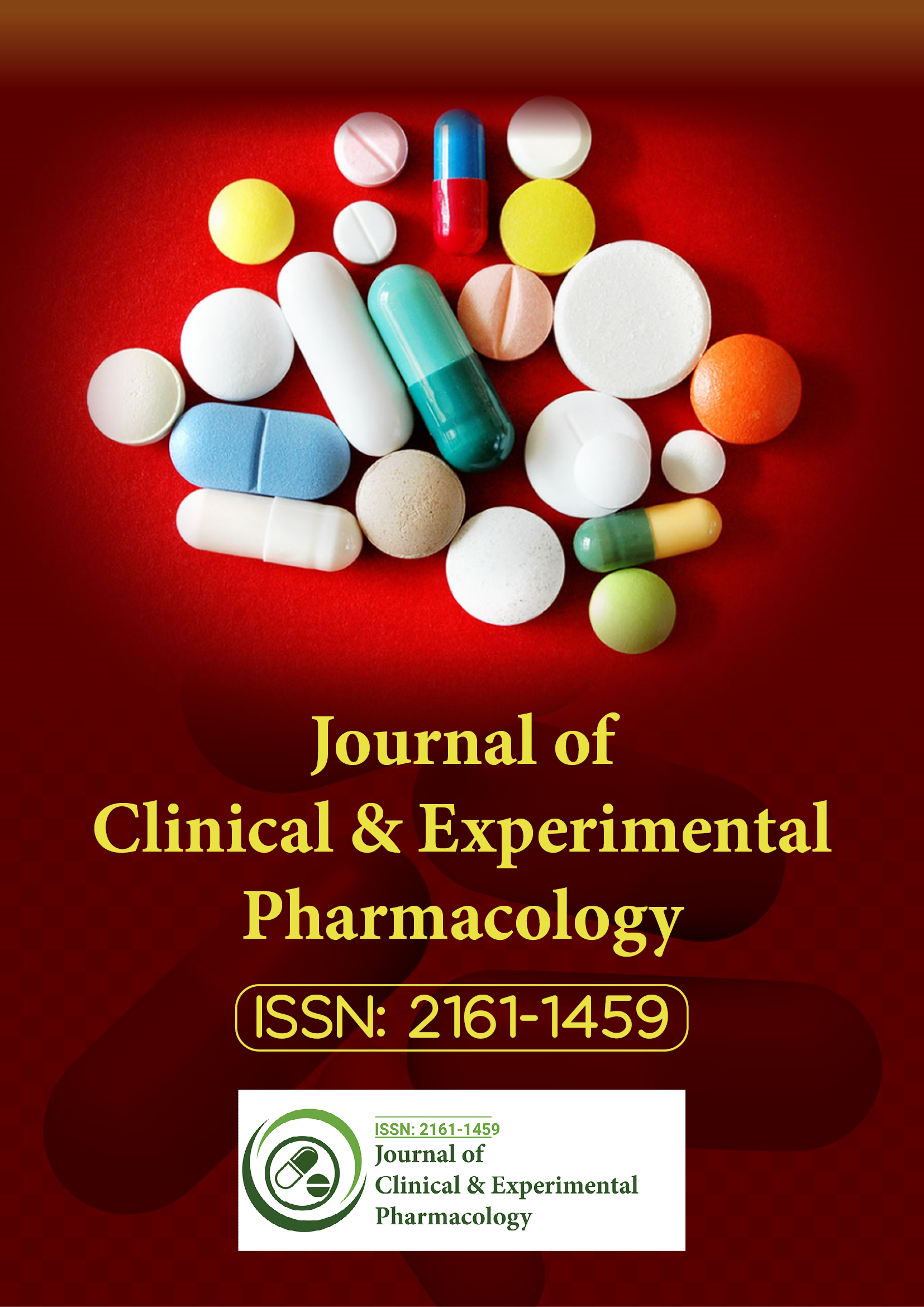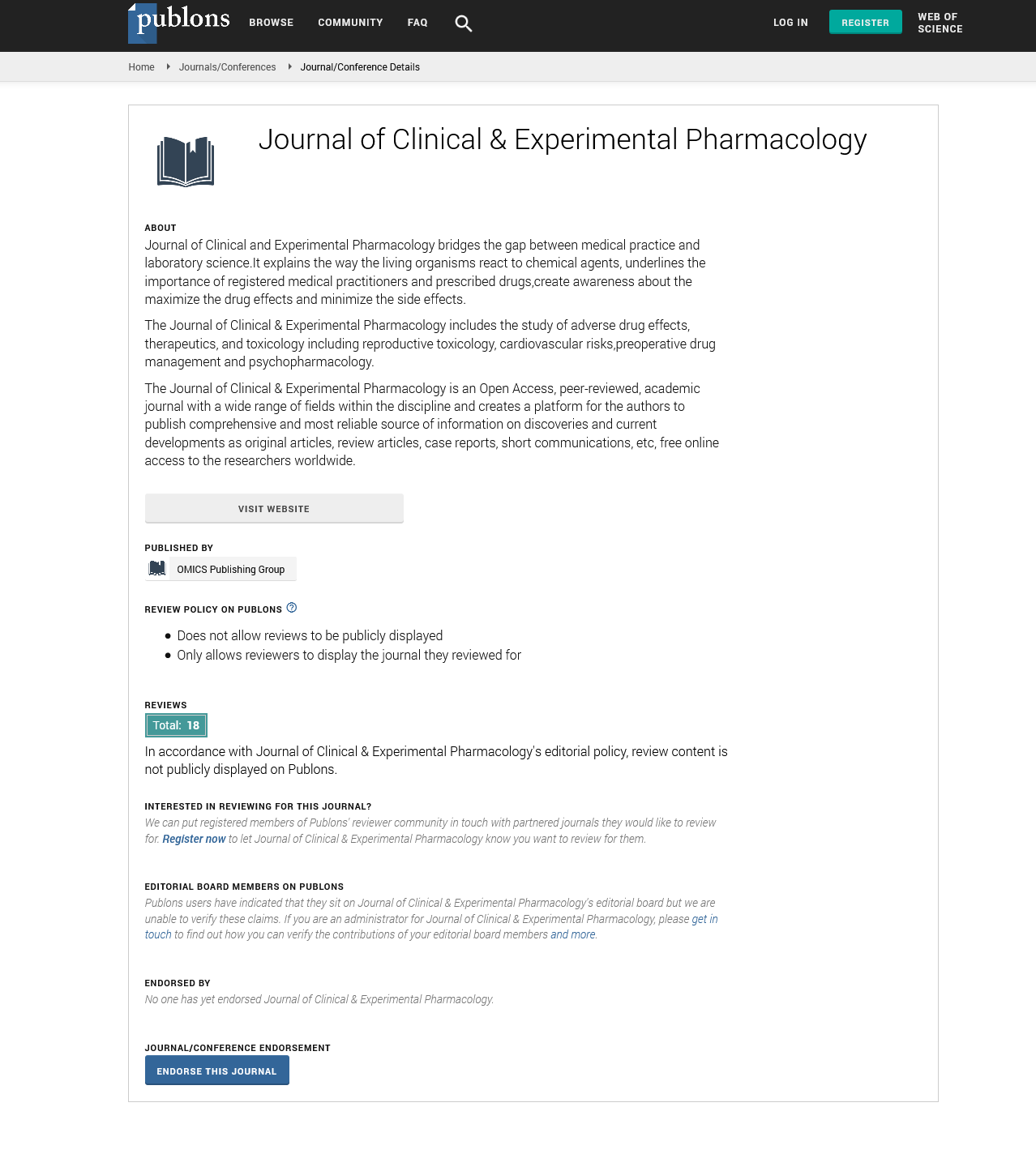Indexed In
- Open J Gate
- Genamics JournalSeek
- China National Knowledge Infrastructure (CNKI)
- Ulrich's Periodicals Directory
- RefSeek
- Hamdard University
- EBSCO A-Z
- OCLC- WorldCat
- Publons
- Google Scholar
Useful Links
Share This Page
Journal Flyer

Open Access Journals
- Agri and Aquaculture
- Biochemistry
- Bioinformatics & Systems Biology
- Business & Management
- Chemistry
- Clinical Sciences
- Engineering
- Food & Nutrition
- General Science
- Genetics & Molecular Biology
- Immunology & Microbiology
- Medical Sciences
- Neuroscience & Psychology
- Nursing & Health Care
- Pharmaceutical Sciences
Perspective - (2025) Volume 15, Issue 1
Impact of Uremic Toxins and Inflammation on Drug Metabolism
Diego Silva*Received: 29-Jan-2025, Manuscript No. CPECR-25-28883; Editor assigned: 31-Jan-2025, Pre QC No. CPECR-25-28883 (PQ); Reviewed: 14-Feb-2025, QC No. CPECR-25-28883; Revised: 21-Feb-2025, Manuscript No. CPECR-25-28883 (R); Published: 28-Feb-2025, DOI: 10.35248/2161-1459.25.15.463
Description
Chronic Kidney Disease (CKD) is an increasingly prevalent health condition that disrupts various physiological systems, including hepatic drug metabolism. While the kidney’s filtration function is most directly affected, accumulating evidence suggests that CKD also alters the expression and function of hepatic drug-metabolizing enzymes. Understanding these changes is critical for optimizing drug dosing in CKD patients, especially those with advanced disease, as altered metabolism can lead to reduced efficacy or increased toxicity of medications.
The liver’s central role in drug metabolism involves Phase I and Phase II enzymes, including members of the cytochrome P450 (CYP) family such as CYP3A4, CYP2C9 and CYP1A2, as well as conjugation enzymes like UGT1A1 and sulfotransferases. These enzymes are influenced by both genetic and non-genetic factors and in the context of CKD, uremic toxins and systemic inflammation appear to be primary modulators. Uremic toxins such as indoxyl sulfate and p-cresol accumulate as renal function declines and can directly affect gene expression by interacting with nuclear receptors or by altering transcription factor activity.
Animal studies and human data show that progressive CKD results in downregulation of key drug-metabolizing genes. For instance, expression of CYP3A4, which metabolizes nearly half of all marketed drugs, is consistently diminished in CKD models. Similarly, CYP2C9 and CYP1A2 levels are suppressed, which can lead to altered pharmacokinetics of medications such as warfarin and theophylline. Phase II enzymes such as UGT1A1, responsible for glucuronidation reactions, are also affected. These changes are compounded by altered hepatic transporter activity and reduced hepatic blood flow, further complicating the prediction of drug clearance.
Nuclear receptors like the Pregnane X Receptor (PXR) and Constitutive Androstane Receptor (CAR) regulate the transcription of many drug-metabolizing enzymes. In CKD, the signaling through PXR and CAR appears to be blunted, which contributes to lower expression of enzymes like CYP3A4. This suppression may be mediated by the accumulation of inflammatory cytokines such as IL-6 and TNFα-, which interfere with nuclear receptor activity and downstream gene expression.
The clinical implications of these alterations are significant. Patients with CKD, particularly those with stages 4 and 5 disease or those on dialysis, are often prescribed multiple medications, many of which rely on hepatic metabolism. Underestimating the impact of CKD on drug metabolism can lead to adverse drug reactions, which are already more common in this population. Drugs with narrow therapeutic indices, such as phenytoin or tacrolimus, are especially concerning, as minor changes in metabolism may lead to toxic concentrations.
Despite the growing body of knowledge, current clinical guidelines do not uniformly account for altered hepatic metabolism in CKD patients. Drug dosing recommendations are often based on renal clearance alone, neglecting hepatic metabolic changes. There is a pressing need to integrate hepatic function into pharmacokinetic models tailored for CKD. In this context, personalized medicine approaches, including genotyping of drug-metabolizing enzymes and real-time monitoring of plasma drug levels, could enhance treatment safety and efficacy.
Furthermore, emerging biomarkers that reflect hepatic metabolic capacity, such as endogenous metabolic ratios of probe drugs, may help refine dosing in CKD. The development of in vitro and in vivo models that mimic the uremic environment is essential to improve our understanding of CKD-mediated metabolic modulation. Humanized liver mouse models and primary hepatocyte cultures exposed to uremic serum are potential tools in this regard.
In conclusion, the progressive nature of CKD impacts not only renal but also hepatic drug metabolism through complex mechanisms involving uremic toxins, inflammation and altered nuclear receptor signaling. These changes necessitate a reevaluation of current drug dosing paradigms in CKD patients. Incorporating hepatic metabolic changes into pharmacokinetic models and clinical decision-making frameworks will be essential for ensuring drug safety and effectiveness in this vulnerable population. A comprehensive approach involving nephrologists, pharmacologists and clinical pharmacogeneticists is essential to address these challenges and to move toward a more individualized and safer therapeutic strategy for CKD patients.
Citation: Silva D (2025). Impact of Uremic Toxins and Inflammation on Drug Metabolism. J Clin Exp Pharmacol. 15:462.
Copyright: © 2025 Silva D. This is an open-access article distributed under the terms of the Creative Commons Attribution License, which permits unrestricted use, distribution and reproduction in any medium, provided the original author and source are credited.

